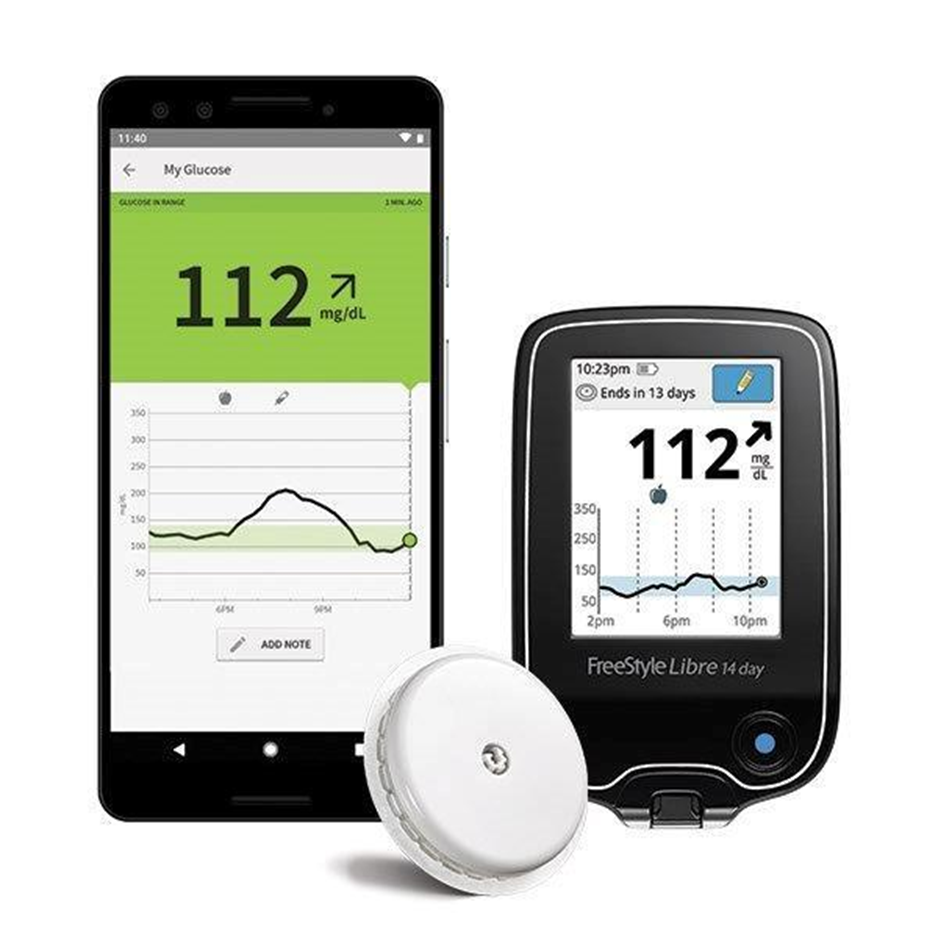CONTINUOUS BLOOD GLUCOSE MONITORING SYSTEM

Continuous glucose monitoring is wearable technology that makes it easier to track your blood sugar levels over time. Blood sugar is another term for blood glucose.
What does CGM measure?
CGM is a tool for people with diabetes. It measures your glucose levels 24 hours a day when you are wearing the device.
Insulin is a hormone that helps your body regulate blood sugar levels. If you have Type 1 diabetes, your body doesn’t produce enough (or any) of the hormone insulin. In Type 2 diabetes, your body makes insulin but doesn’t use it effectively.
People with diabetes need to give themselves insulin regularly to keep blood sugar levels steady.
Why do people with diabetes need to track blood sugar levels?
Tracking blood glucose levels tells you how much insulin your body needs and when. Blood sugar levels that go up and down a lot can damage your body in different ways. Very high (hyperglycemia) or low (hypoglycemia) blood sugar levels can be serious, and even life-threatening when not treated quickly.
Many things (like the foods you eat, sports you play and your lifestyle) can affect your blood sugar levels. But diabetes affects everyone differently. How a food or activity affects one person’s glucose levels is often different from how that same thing affects someone else.
Your body can also be unpredictable. Sometimes, your body can have a reaction that even healthcare providers don’t always understand. All of these factors can make managing diabetes challenging, even when you think you’re doing everything right.
Pros
- eliminate the need for fingerstick tests
- constant data stream can help you spot trends
- users report that they learn about their diabetes and its relationship to their bodies
Cons
- wearable tech — even without wires, you’ll still have to deal with having a device affixed to your body
- the constant data stream can be a drawback for some people, creating a sense of urgency to constantly react to the number you see on the screen
- costs are a major concern for many people
PROCEDURE DETAILS
How do continuous glucose monitoring (CGM) devices work?
You can choose among a handful of CGM devices available today. Each works pretty much the same way. The main differences are in a device’s look, feel and features.
In general, here’s how CGM works:
- You place a small sensor just under your skin, usually on your belly or arm. An applicator makes this part quick and easy to do. Adhesive tape holds the sensor in place.
- The sensor measures glucose levels in the fluid under your skin. Most CGM devices take readings every five minutes, all day and night. You’ll need to change the sensor regularly based on the device. For most devices, you change sensors at home every 7 to 14 days. For some long-term implantable CGM devices, your healthcare provider will change the sensor in a procedure in their office a handful of times (or less) each year.
- All CGM systems use a transmitter to wirelessly send the glucose data from the sensor to a device where you can view it. For some CGM systems, the transmitter is reusable and attaches to each new sensor. For other CGM systems, the transmitter is part of the disposable sensor.
- Depending on the CGM system, glucose data from the sensor is sent to either a handheld device called a receiver (similar to a cell phone), an app on your smartphone or an insulin pump.
- You can download CGM data (real-time glucose levels, trends and history) to a computer anytime. Some CGM systems will send data continuously. You can also share the information with your doctor.
